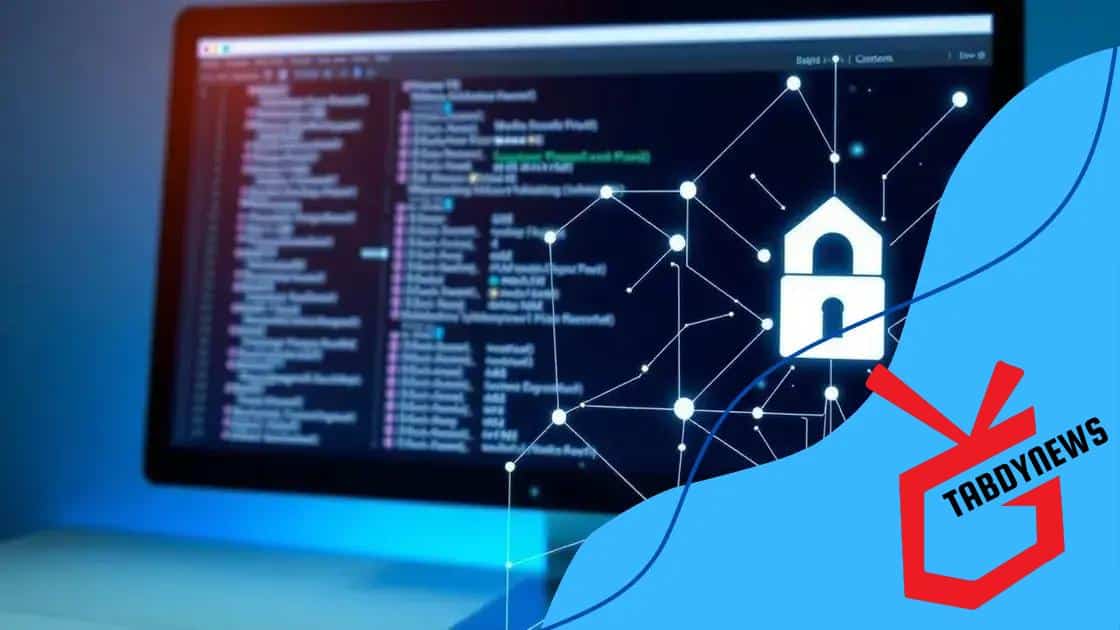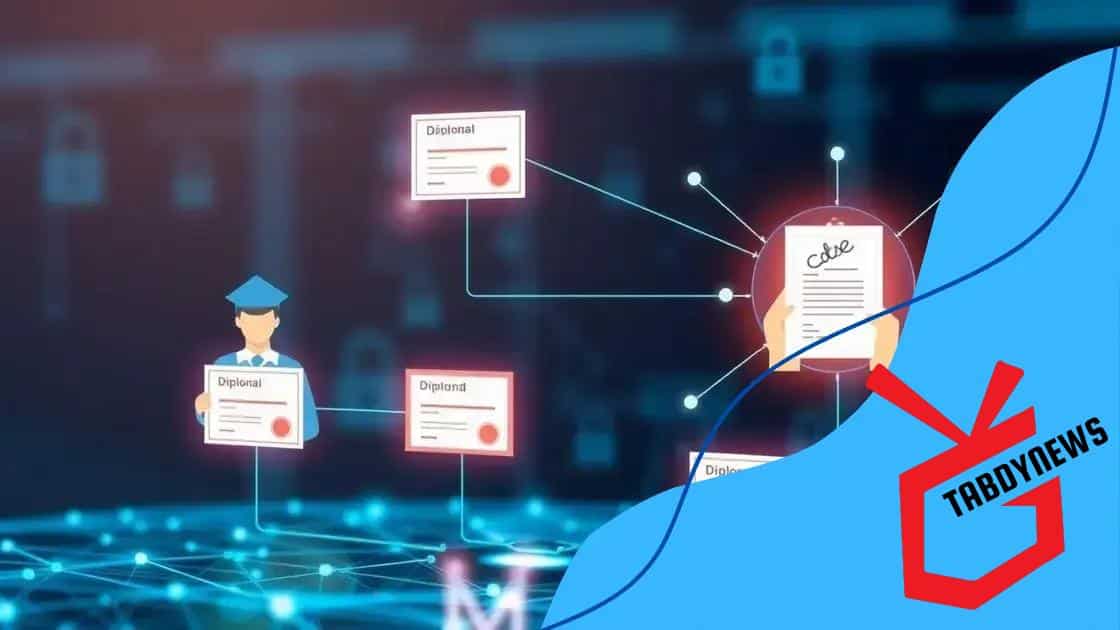Blockchain for student record verification: a game changer

Blockchain for student record verification enhances security, efficiency, and trust, allowing institutions to quickly validate credentials while minimizing fraud and data tampering.
Blockchain for student record verification is transforming how educational institutions manage credentials. Imagine a world where your qualifications are tamper-proof and accessible in seconds. Curious about how this works? Let’s dive in.
Understanding blockchain technology
Understanding blockchain technology is essential to grasp how it can revolutionize various sectors, including education. At its core, blockchain is a decentralized digital ledger that securely records transactions across many computers. Because the data is stored in a way that no single entity controls it, information becomes more reliable and resistant to tampering.
This technology ensures that once data is recorded, it cannot be altered without the consensus of the network, making student records more secure than ever. Imagine a world where schools and universities can quickly verify a student’s qualifications while maintaining privacy and security.
Key Features of Blockchain
Several features make blockchain technology stand out:
- Decentralization: Unlike traditional databases, blockchain is not controlled by a single authority.
- Transparency: All transactions are visible to participants in the network, enhancing trust.
- Immutability: Once data is added to the blockchain, it cannot be changed or deleted.
- Security: Cryptography protects the data from unauthorized access.
Incorporating blockchain into the educational system could streamline processes like admissions and record-keeping. Schools can create digital diplomas that students can share with employers without the fear of forgery. This process not only saves time but also reduces administrative costs.
How Blockchain Works
When a transaction is created, it gets bundled with others into a block. This block is then sent to the network of computers that validate the transaction. Once approved, the block gets added to the chain. This process typically only takes a few minutes and ensures that the information is accurate.
Blockchains use consensus algorithms like Proof of Work or Proof of Stake to agree on the validity of transactions. These algorithms help protect the network against fraud and ensure that every participant can trust the system.
The potential applications are vast, ranging from simple record-keeping to more complex solutions like authentication of credentials and smart contracts.
How blockchain enhances student record security
How blockchain enhances student record security is an important topic as schools and organizations seek better methods to protect sensitive information. This innovative technology offers solutions that strengthen the security of educational records, minimizing the risks of fraud and unauthorized access.
The traditional methods of storing student records often come with vulnerabilities. These records are frequently housed in centralized databases, which can be vulnerable to hacking. In contrast, blockchain maintains a distributed ledger that ensures transparency and reliability.
Key Benefits of Using Blockchain for Security
Implementing blockchain technology in student records can bring significant advantages:
- Enhanced Data Security: Information is encrypted and stored across multiple nodes, making it nearly impossible to alter.
- Access Control: Schools can manage who sees the records, ensuring that only authorized parties have access.
- Fraud Prevention: The immutable nature of blockchain makes it extremely difficult for anyone to falsify records.
- Streamlined Verification: Employers and institutions can verify credentials quickly without relying on third-party services.
Once a record is entered into the blockchain, it becomes part of a permanent public ledger. This process means records are timestamped and cannot be modified. For instance, if a student graduates, that information is securely added to the blockchain, providing a permanent proof of their achievement.
Because of its decentralized nature, data on the blockchain remains accessible even if one part of the network fails. This means that student records can be accessed anytime, anywhere, without compromising security.
Real-World Applications
Schools and universities are already beginning to explore the implementation of blockchain. Some institutions use it to issue diplomas and certificates that can be verified by employers. This evolution not only combats fraud but also gives students ownership of their educational records.
Furthermore, implementing blockchain can help streamline administrative tasks. With secure records, school officials spend less time on verification processes, freeing them to focus on what truly matters: education.
Benefits of using blockchain for verification

Benefits of using blockchain for verification are becoming increasingly clear as educational institutions seek to modernize their processes. Blockchain technology provides a unique solution to many challenges in record verification. This technology eliminates the need for intermediaries, allowing for a faster and more reliable process.
One of the major benefits is the increase in efficiency. With blockchain, the verification of credentials takes just a few minutes instead of days or weeks. This quick turnaround time helps students and employers alike. No more waiting for documents to be sent and verified through traditional methods.
Key Advantages of Blockchain Verification
The advantages of adopting blockchain for verification are numerous:
- Cost Savings: Reduces administrative costs by eliminating paperwork and manual verification processes.
- Improved Accuracy: Minimizes the chances of human error in verifying records, thus ensuring the data is accurate.
- Increased Trust: With transparent processes, both students and employers can easily verify academic credentials without doubts.
- Global Access: Students can share their records with anyone, anywhere, instantly, which expands their opportunities.
Using blockchain for verification also enhances security. Traditional systems are often targets for fraud, but blockchain presents nearly unbeatable defenses with its cryptographic protections. Every record is tied to the previous one, making tampering nearly impossible.
Moreover, institutions are exploring how blockchain can simplify onboarding processes for new students. By accepting verified records directly from the blockchain, schools can help students enter programs without delay, creating a smoother academic experience.
Real-World Impact
Many universities and organizations are already adopting blockchain for verification. This shift not only enhances security but also builds a more decentralized and trustworthy educational landscape. With ongoing advancements in technology, the benefits of blockchain will continue to grow, shaping the future of education.
Challenges in implementing blockchain systems
Challenges in implementing blockchain systems are significant concerns for educational institutions exploring this technology. While blockchain can enhance security and efficiency, there are hurdles that must be addressed before widespread adoption.
One of the key challenges is the integration of blockchain with existing systems. Many schools rely on outdated technology, making it difficult to transition to a new, decentralized model. This can require substantial investment in new infrastructure and training for staff.
Common Obstacles in Blockchain Implementation
Several factors complicate the adoption of blockchain technology:
- Cost: Setting up blockchain systems can be expensive due to required hardware and software updates.
- Regulatory Issues: There are still many legal uncertainties surrounding blockchain laws and privacy regulations.
- Scalability: As more users interact with a blockchain, performance can degrade, leading to slow transactions.
- Education and Awareness: Many stakeholders may not fully understand blockchain, creating hesitance to adopt its use.
In addition to these challenges, the need for cooperation among different institutions can slow progress. Schools, universities, and employers must work together to create a standardized approach to using blockchain for record verification. Without collaboration, the benefits of blockchain may not be fully realized.
Security concerns are also on the minds of administrators. While blockchain is touted for its security features, no system is foolproof. Cybersecurity threats can still exist, potentially affecting the integrity of the records stored on a blockchain.
Overcoming Implementation Challenges
Despite these challenges, many institutions are finding ways to implement blockchain effectively. By starting with pilot programs, schools can test the technology on a smaller scale before expanding. Seeking partnerships with tech companies can also lend valuable expertise and resources. Continued education about blockchain will help foster a culture of understanding and innovation within the academic community, paving the way for future implementations.
Future of blockchain in education
Future of blockchain in education looks promising as technology continues to evolve. As more educational institutions explore blockchain, the potential for transforming how records are managed and verified becomes clearer. This technology offers solutions that can address current challenges in the academic world.
One of the main trends is the increasing integration of blockchain into student record management. This can lead to more secure, transparent, and efficient processes for handling credentials. Imagine a world where diplomas and certificates are instantly verifiable by employers, eliminating fraud and confusion.
Emerging Trends in Blockchain Education
Several trends are shaping the future of blockchain in education:
- Smart Contracts: These are self-executing contracts with terms directly written into code. They can automate processes like admissions and payments.
- Digital Credentials: Institutions are starting to issue digital diplomas stored on blockchains, ensuring their authenticity.
- Collaborative Learning: Blockchain can facilitate partnerships between schools, allowing shared access to educational records while maintaining security.
- Data Privacy: Stronger protections around personal data will become essential, and blockchain can ensure students control their information.
As blockchain adoption grows in education, it’s important to address the need for training and resources. Educators and administrators must understand how to use this technology effectively. Workshops and professional development programs can play a critical role in preparing them for these changes.
Moreover, the potential for blockchain to enhance learning experiences is significant. For instance, it can offer personalized learning paths by verifying prior knowledge and skills. This means that students can progress at their own pace while receiving tailored content.
Challenges to Watch
However, challenges remain. As institutions implement blockchain solutions, they must navigate regulatory landscapes and ensure compliance with privacy laws. Greater collaboration between government, educational institutions, and blockchain developers is essential to overcome these hurdles.
In looking ahead, the role of blockchain in education is expected to expand. Innovations will likely emerge, leading to new applications that enhance not only record management but overall educational experiences. As this technology matures, it can empower students, educators, and the entire educational ecosystem.
FAQ – Frequently Asked Questions about Blockchain in Education
What is blockchain technology?
Blockchain is a decentralized digital ledger that records transactions securely across multiple computers, making it tamper-proof.
How can blockchain enhance student records?
Blockchain improves security, reduces fraud, and allows quick verification of student credentials while maintaining privacy.
What are the benefits of using blockchain in education?
Benefits include increased efficiency, cost savings, improved accuracy, and enhanced trust among students and institutions.
What challenges do institutions face in implementing blockchain?
Key challenges include integration with existing systems, regulatory issues, costs, and the need for staff training and awareness.





